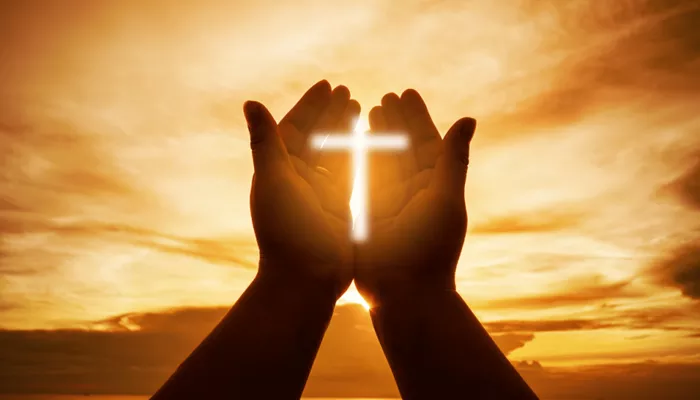Advent is a significant season in the Christian calendar, marking the anticipation of Christ’s birth. It begins on the fourth Sunday before Christmas and lasts until Christmas Eve. The word “Advent” comes from the Latin “adventus,” meaning “coming.” This period is characterized by hope, preparation, and reflection. Central to Advent are four symbols, each representing an essential aspect of this sacred time. Understanding these symbols deepens our appreciation of Advent’s spiritual significance and invites us into a deeper relationship with the divine.
The Advent Wreath
One of the most recognizable symbols of Advent is the Advent wreath. Typically made of evergreen branches, the wreath symbolizes eternal life and the hope of new beginnings. The circular shape represents God’s unending love, with no beginning or end.
Structure of the Wreath
The wreath usually features four candles, three purple and one pink, arranged in a circular formation. Each candle represents a different theme associated with the weeks of Advent:
First Week: Hope
Second Week: Peace
Third Week: Joy
Fourth Week: Love
The candles are often lit in a specific order, with the first candle lit on the first Sunday of Advent. Each candle’s light grows stronger as the weeks progress, symbolizing the increasing light of Christ entering the world. The pink candle, known as the “Shepherd’s Candle,” is lit during the third week to signify joy, emphasizing the excitement of Christ’s impending birth.
Lighting the Candles
As the candles are lit each week, prayers and reflections are often shared, allowing worshippers to meditate on the themes of hope, peace, joy, and love. This ritual creates a space for personal and communal reflection, drawing individuals closer to the heart of Advent’s message.
The Jesse Tree
Another powerful Advent symbol is the Jesse Tree. This symbol traces the lineage of Jesus Christ, connecting the Old and New Testaments. The tree is named after Jesse, the father of King David, and serves as a visual representation of the promise of salvation that unfolds through generations.
Significance of the Jesse Tree
Each ornament or decoration on the Jesse Tree represents a biblical figure or event that leads to the birth of Jesus. Common symbols include:
An apple: Representing Adam and Eve
A lamb: Signifying the sacrificial system in the Old Testament
A crown: Representing King David and his lineage
The Jesse Tree serves as a reminder of God’s faithfulness throughout history, emphasizing that the birth of Christ is the fulfillment of ancient prophecies and promises.
Daily Reflections
Many families and congregations incorporate daily readings and reflections during Advent, focusing on a different symbol each day. This practice encourages a deeper understanding of biblical stories and the significance of Christ’s birth in the context of God’s ongoing narrative of redemption.
The Nativity Scene
The Nativity scene, depicting the birth of Jesus, is another beloved Advent symbol. Often set up in homes and churches, the Nativity scene serves as a visual reminder of the miracle of Christmas.
Components of the Nativity Scene
The traditional Nativity scene features key figures, including:
Mary: Representing humility and obedience
Joseph: Symbolizing faith and protection
Baby Jesus: The central figure, embodying hope and salvation
The Shepherds: Illustrating the joy of receiving the good news
The Magi: Representing the acknowledgment of Christ by the nations
Each character contributes to the overarching story of Jesus’ birth, emphasizing themes of humility, devotion, and divine revelation.
Encouraging Reflection
Setting up the Nativity scene during Advent invites families to reflect on the significance of each figure and their roles in the Christmas story. It can also serve as a catalyst for discussions about faith, generosity, and the true meaning of Christmas.
The Advent Calendar
The Advent calendar is a widely recognized symbol that helps countdown the days until Christmas. This tradition varies in form and style but generally features a series of doors or windows that open each day, revealing a surprise, scripture, or reflection.
Purpose of the Advent Calendar
The Advent calendar encourages anticipation and excitement as the days draw closer to Christmas. Each opening serves as a moment of reflection and joy, often highlighting themes that align with the four weeks of Advent.
Types of Advent Calendars
Advent calendars come in various forms, from simple paper calendars with illustrations to elaborate wooden or fabric designs. Some calendars include chocolates or small gifts, while others focus on scripture readings or acts of kindness.
Promoting Spiritual Growth
Using an Advent calendar can enhance the spiritual experience of the season. Families can choose to include activities, prayers, or reflections that align with the themes of hope, peace, joy, and love, transforming each day into an opportunity for spiritual growth.
Conclusion
The four symbols of Advent—the Advent wreath, Jesse Tree, Nativity scene, and Advent calendar—each play a vital role in preparing the heart for the celebration of Christ’s birth. They invite us to reflect on the themes of hope, peace, joy, and love, fostering a deeper connection with our faith and community.
As we light the candles of the Advent wreath, add ornaments to the Jesse Tree, set up the Nativity scene, and open doors on our Advent calendars, we engage in a rich tradition that spans centuries. These symbols remind us that Advent is not merely a countdown to Christmas but a sacred season of preparation, anticipation, and spiritual renewal.
In embracing these symbols, we are called to reflect on the significance of Christ’s coming and the hope that it brings. As we journey through Advent, may we open our hearts to the light and love that Christ offers, preparing us not only for Christmas but for a lifelong relationship with the divine.
Related topics:

